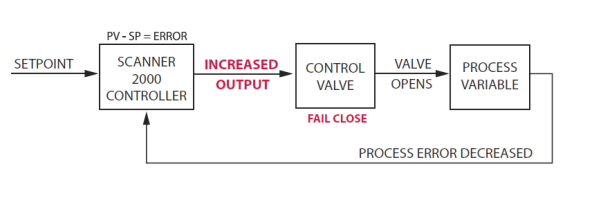There are two types of controller action: Direct action and reverse action.
What type of change in the controller output (increase or decrease) is required to bring the process variable in line with the control setpoint?” If an improper action setting is selected, the controller will respond in a manner opposite the intended response (increasing temperature, rather than decreasing it, for example).
Direct action causes the output value to change in the same direction as the change in PV (increase in PV à increase in controller output).
The control valve will fail in the closed position.
The error is initially positive (PV - SP>0). The positive error is counteracted by an increased controller output; therefore, this controller is direct-acting.

Reverse action causes the output value to change in the opposite direction as the change in PV (increase in PV a decrease in controller output).
The control valve will fail in the open position.
The error is initially positive (PV - SP>0). The positive error is counteracted by a decreased controller output; therefore, this controller is reverse-acting.

Remember:
PV + , MV + = Direct Control
PV +, MV - = Reverse Control